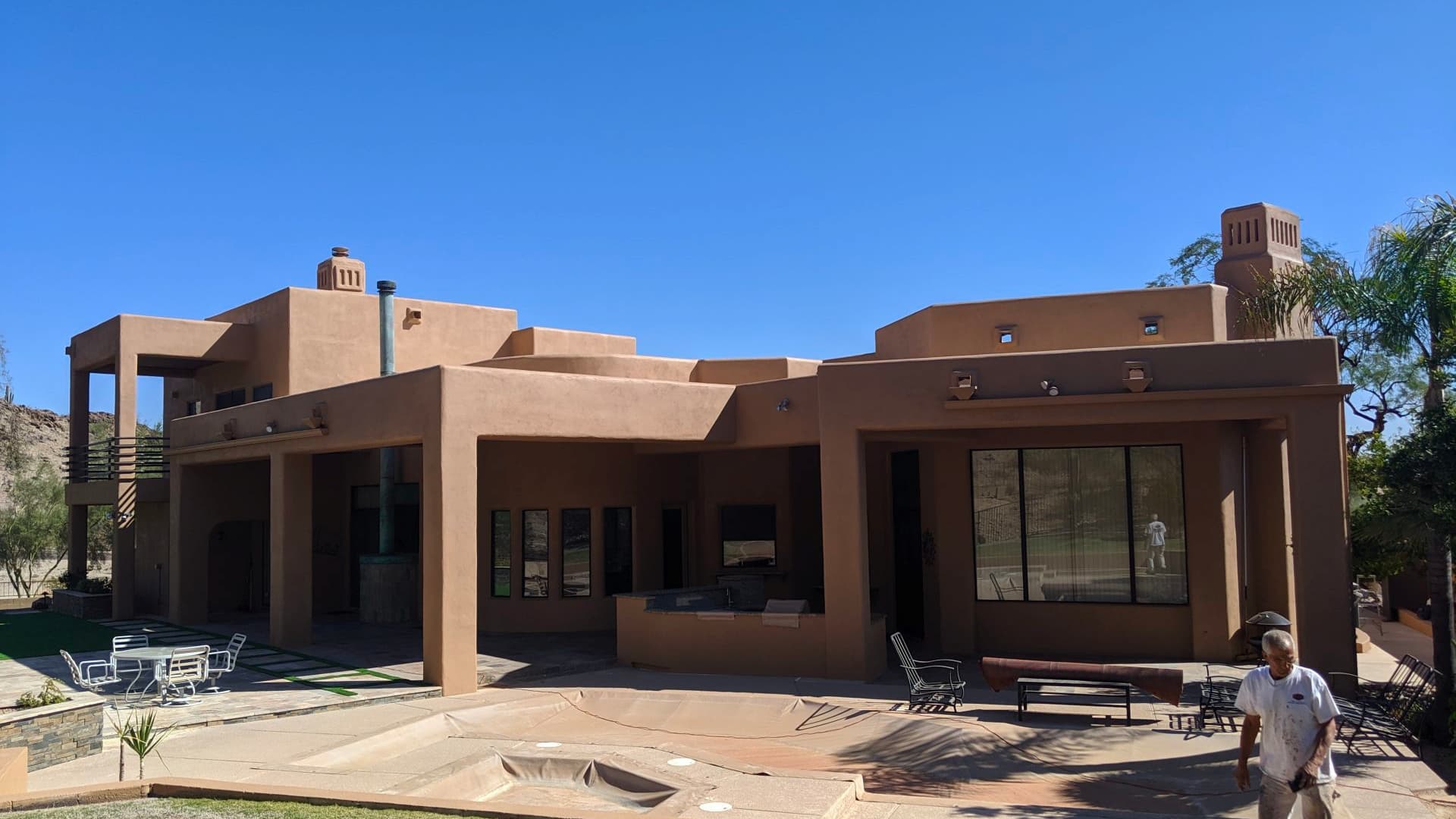If you want your home to stand the test of time, painting is one project that you should make a priority.
Exterior paintwork is especially susceptible to wear and tear from exposure to the sun and extreme weather conditions. The paint and caulking on the exterior of your home provides vital protection against the elements. Damaged paint no longer acts as a barrier, which leaves the structures of your home exposed.
Your interior paintwork plays much the same role in protecting structures such as doors, framing, ceilings and skirting from condensation and other general damage. Besides which, you want your new home to look and feel homey both inside and out.
Prepping and Application
With any paint project, ensuring your surfaces are ready for the application of paint is essential. All surfaces should be completely clean and smooth. For large exterior surfaces, you may want to use a power sprayer to cover distance and achieve clean work areas. When dealing with smaller surface areas that are easier to reach, sandpaper or a sturdy brush will suffice.
Use suitable putty or filler to fill in any holes in your painting surface, sanding down the surface for a smooth finish. It is also acceptable to paint over old paint so long as the surface is clean and not flaking. Use your discretion when deciding whether to smooth out imperfections or start from a bare surface.
Using a combination of brushes and rollers is recommended in any type of large painting project. While rollers are ideal for covering greater surface areas, brushes are better for narrow or awkward surfaces. Always paint surfaces that are protected from direct sunlight first. You can follow the sun around the property to avoid the newly applied paint from drying too quickly and resulting in prematurely dehydrated paintwork.
Exterior Paintwork
When painting the exterior of your home, you will first need to decide on the type of paint you want to use. Water-based latex paint is less messy for the inexperienced painter as it is easily cleaned with soapy water. This type of paint is also quick-drying and not as prone to cracking due to the flexibility of the paint.
When using alkyd, or oil-based paints, there is more work needed during cleanup. The paint is more robust and you will need paint thinner to remove any excess paint. The benefits of alkyd paints are that they are more resistant to staining and provide better durability. For new homeowners, the durability of alkyd paints is worth the mess as they save money in the long run.
While it is important to leave enough money in your budget for the tools that you will need, the quality of your paint will stand by you. Purchase the most expensive paint you can afford within the constraints of your budget. It will save you having to repaint the entire exterior of your home sooner than you should need to.
Paint goes through rigorous testing before it is put on the market, so take advantage of the manufacturer’s guidelines. Do not assume that all paints are created equally. Follow the specific directions for the application found on the can. Paints are designed for application in varying temperatures, which is an important detail when it comes to getting the best results from your project.
Interior Painting
Most of the principles that apply to exterior painting also apply to interior painting projects. However, there are some additional tips to ensure your project goes smoothly. Outside surfaces are normally much easier to clean when paint spills, drips or splashes during application. When you are dealing with multiple material types such as wood, metal surfaces, carpets and furniture inside the house, the risk of damage from paint is increased.
Make sure to protect any surfaces or furniture that you do not intend on painting. Move furniture out of the room or away from your work area, ensuring that it is covered for added protection. Canvas drop cloths are ideal for protecting furniture and floors and should be used liberally when painting the interior of your home.
Consider using only latex paints for interior painting projects as they are easier to clean and produce less odor. When painting an entire room, you should start by painting the ceiling, followed by the walls, and finally the trim. It is also recommended that you prioritize the order in which you paint your rooms. A good rule of thumb is to paint bedrooms first, then bathrooms, then kitchens and finally other living spaces.
For more tips on interior and exterior painting projects, Arizona Painting Company has a team of experts at your disposal. Call today for advice on paint, tools, and best practices when it comes to achieving the best results from all your home projects.

